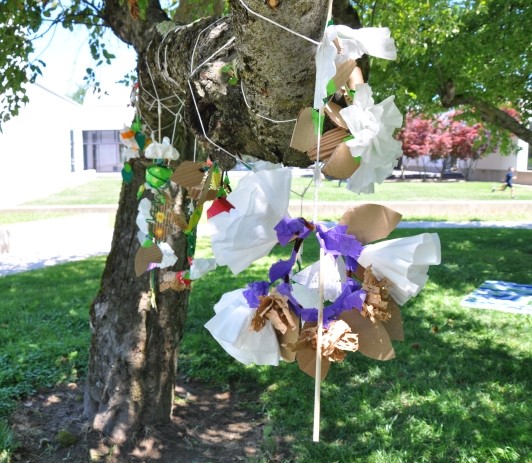Temperance's Open Book Open Play: Branching Out, Tree Mobiles in Bobbie's Meadow
Recently, Summer Art Studio intern Temperance Dewar designed an Open Book Open Play program for museum guests. She planned the event, prepared materials, and facilitated storytime and art making in The Carle’s orchard. The following is her description of the project:
The apple orchard in Bobbie’s Meadow inspired this project’s focus on exploring the shapes we find in nature, especially in trees. I hoped to use the trees around us not only as inspiration for our art, but as teaching tools through which museum guests could build vocabulary and observational skills. Throughout the program, participants were invited to search for shapes in the trees around them and contribute their prior knowledge about trees to the conversation, such as discussing different types of trees or how trees change through the seasons.
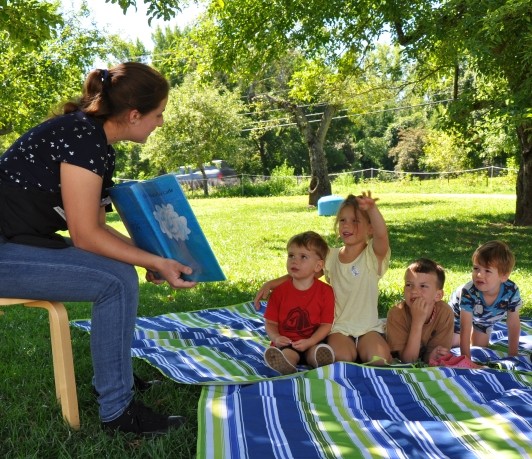
We read Little Cloud by Eric Carle and Trees by Lemnsicates. Both books have some great shapes to discover and discuss, and feature some interesting trees! Our young guests enjoyed imagining what kinds of trees the brightly spotted orchard at the beginning of Little Cloud held, and one keen observer noticed that the orchard at the end of the book looked similar but wasn’t the same: “maybe it’s a close-up or a different part of the same neighborhood!” Reading Trees, we compared the shapes we saw fluttering in the branches and wiggling through the roots with similar shapes in the trees around us, and considered how different trees bear fruit at different times of the year.
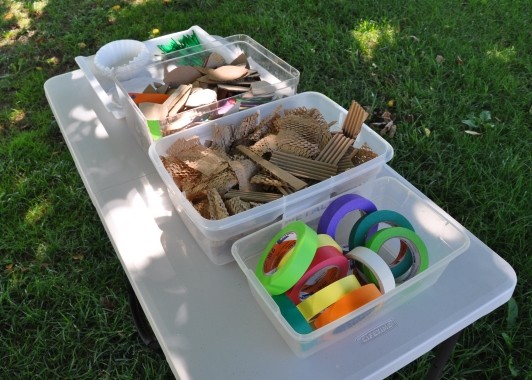
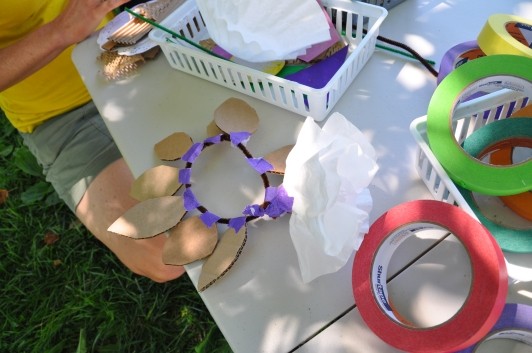
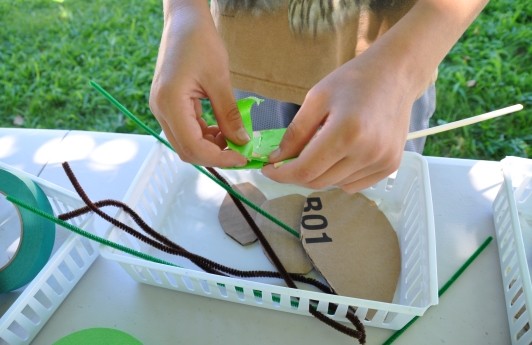
After storytime, guests had the opportunity to build their own tree-branch mobile to take home or add to a tree in Bobbie’s Meadow. Each person started with one chopstick as the base for their branch, and could add to it freeform or leaf-shaped cardboard, green and brown pipe cleaners, coffee filters, doilies, and tape to hold it together as well as add color. Eliminating tools like scissors and glue encouraged an approach to fashioning that paralleled natural growth— layering organic shapes and colors. It also made the art process accessible to a wide range of motor skills.
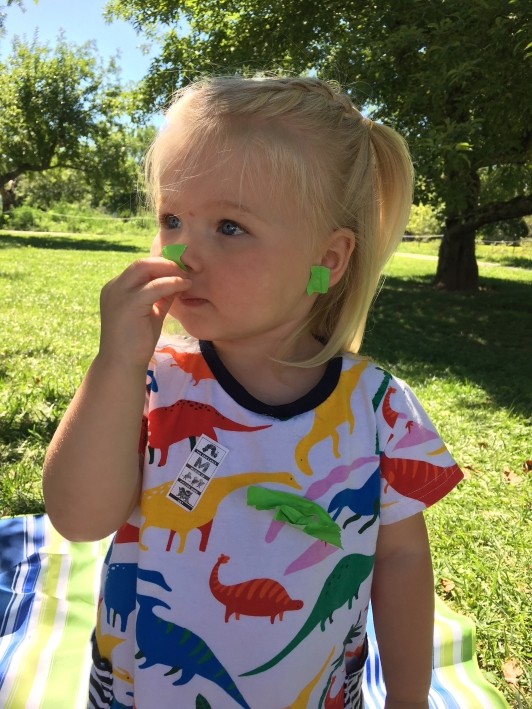
Soon new trees were sprouting all around the Bobbie’s Meadow, some of them curiously human in appearance! One guest carefully layered yellow and green tape to make pears, another made a dangling mobile that was longer that they were, and another made an entire tree, holding it up to describe its different parts from roots to leaves.
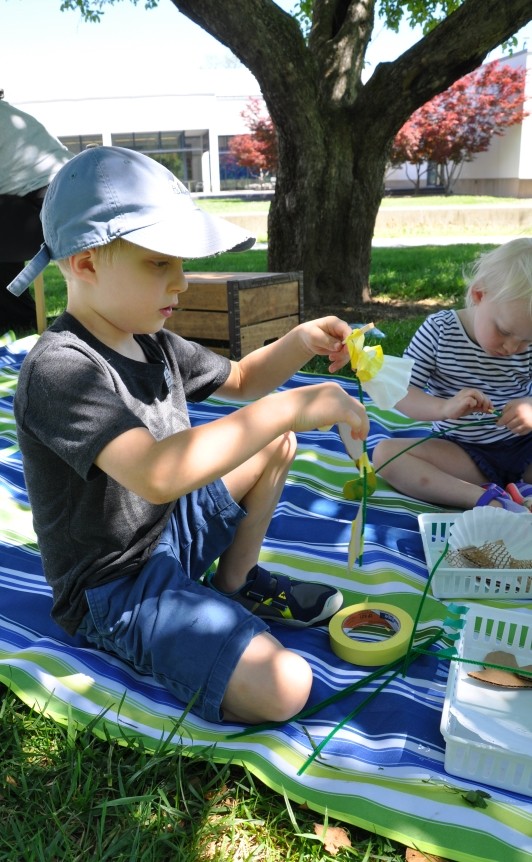
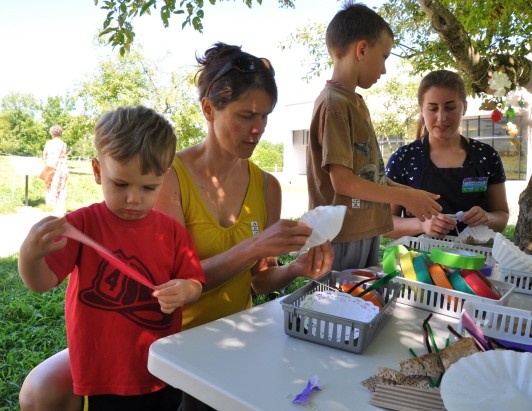
In an effort not to restrict the orchard’s informal, open environment, I chose not to set up normal work tables with stools. Instead, I only provided two small tables as a central hub for materials and let participants go wherever they liked to work on their project. This arrangement had two effects: if one chose to work elbow to elbow with others at the tables, it was hard not to get involved speaking and sharing with each other, and the limited table space suggested it was perfectly okay to take the project elsewhere. Guests found comfortable seats on picnic blankets, under trees, and on benches around Bobbie’s Meadow. This freedom of movement, unconfined to a studio or classroom, seemed to encourage even more play and exploration with the materials.
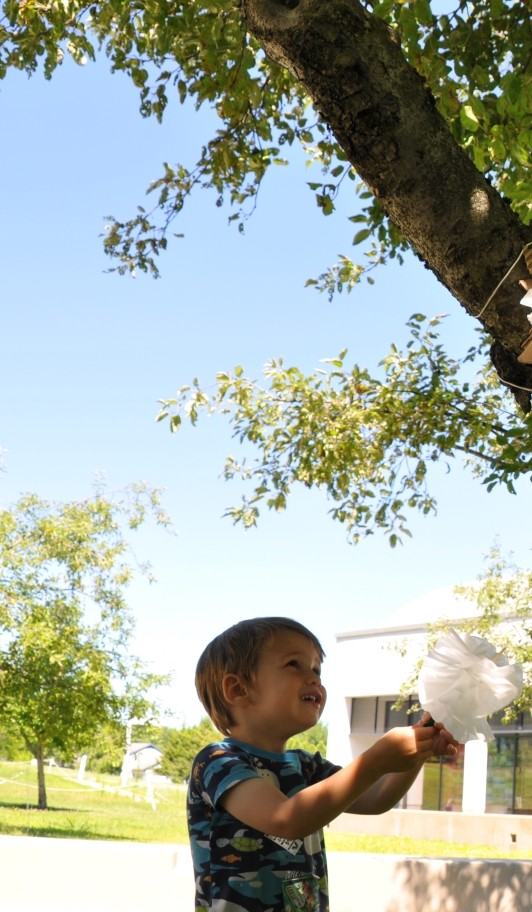
One “collaboration branch” was selected for hosting the finished mobiles if guests chose to display their projects rather than take them home. Toward the end of the program, this branch became a popular spot for learning and play, and a point of reference for lots of different conversations. After finishing their own projects, many learners liked to walk around the collaboration branch and interpret the different artworks, discussing how the art interacted with its environment, how the mobiles were similar or different, or what had been the inspiration and methods behind the creation of their particular work. One guest took on a kind of docent role, describing interesting features of the art to other guests, and an adult used the mobiles for a counting game.
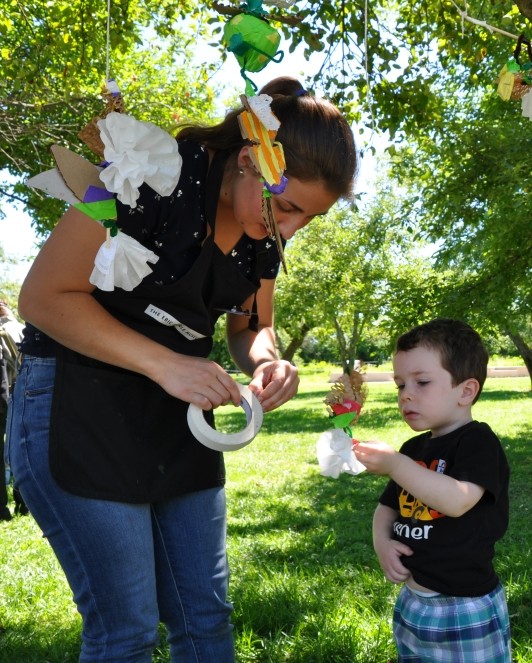
Almost everyone wanted to add their artwork to the collaboration branch. Guests were careful in the arrangement of the display of mobiles, taking time to decide how each art project might best be displayed based on its size and shape in relation to the other projects and the shape of the tree itself.
I was impressed at the range of ideas guests had tackled and the diversity of projects they had created from the same materials. Everyone took an active role in creating, learning, and exploring together, and I hope it was empowering for them to see their own artwork on display at a museum. I’m thankful we had such a beautiful environment to work and play in, and for all the wonderful people who joined us today.
